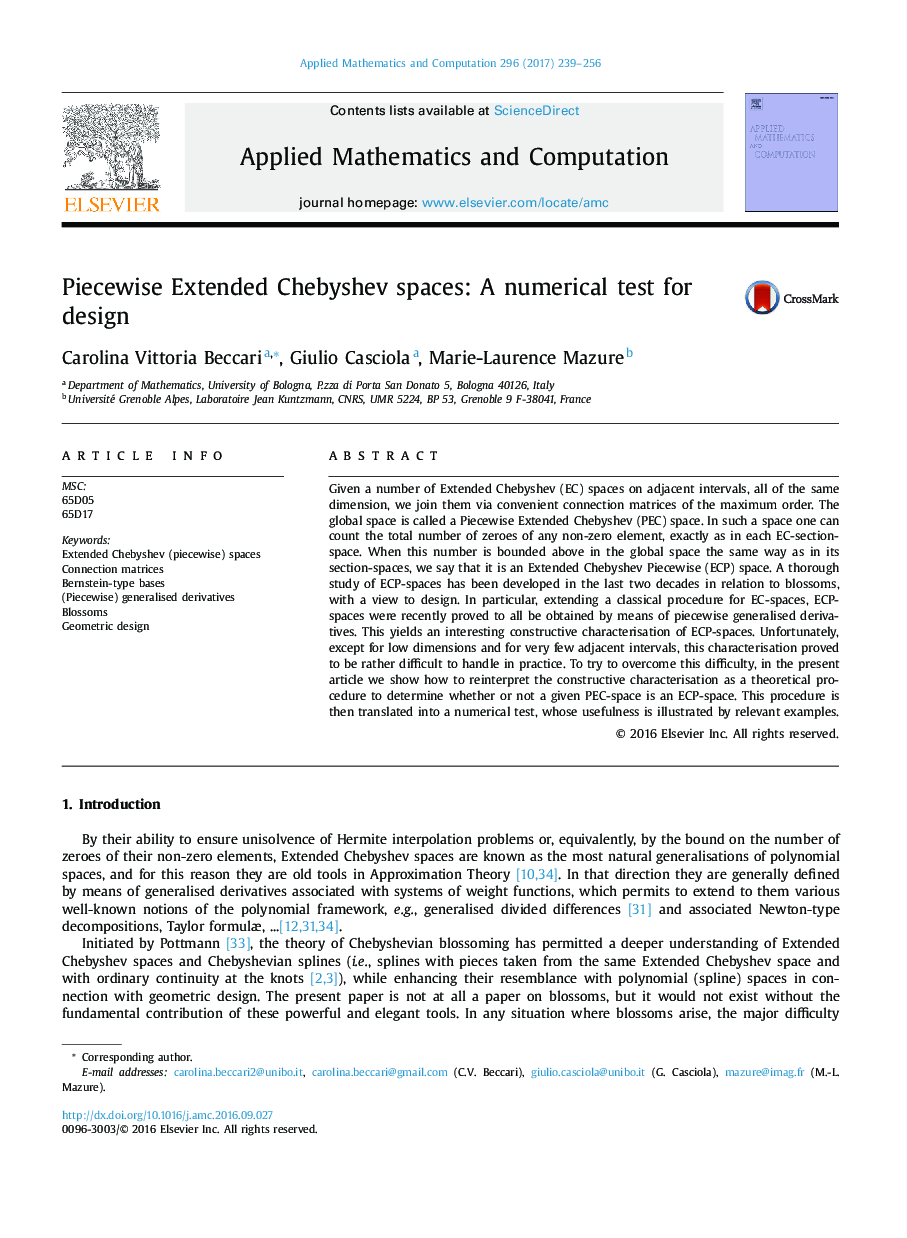| Article ID | Journal | Published Year | Pages | File Type |
|---|---|---|---|---|
| 4625469 | Applied Mathematics and Computation | 2017 | 18 Pages |
Given a number of Extended Chebyshev (EC) spaces on adjacent intervals, all of the same dimension, we join them via convenient connection matrices of the maximum order. The global space is called a Piecewise Extended Chebyshev (PEC) space. In such a space one can count the total number of zeroes of any non-zero element, exactly as in each EC-section-space. When this number is bounded above in the global space the same way as in its section-spaces, we say that it is an Extended Chebyshev Piecewise (ECP) space. A thorough study of ECP-spaces has been developed in the last two decades in relation to blossoms, with a view to design. In particular, extending a classical procedure for EC-spaces, ECP-spaces were recently proved to all be obtained by means of piecewise generalised derivatives. This yields an interesting constructive characterisation of ECP-spaces. Unfortunately, except for low dimensions and for very few adjacent intervals, this characterisation proved to be rather difficult to handle in practice. To try to overcome this difficulty, in the present article we show how to reinterpret the constructive characterisation as a theoretical procedure to determine whether or not a given PEC-space is an ECP-space. This procedure is then translated into a numerical test, whose usefulness is illustrated by relevant examples.
